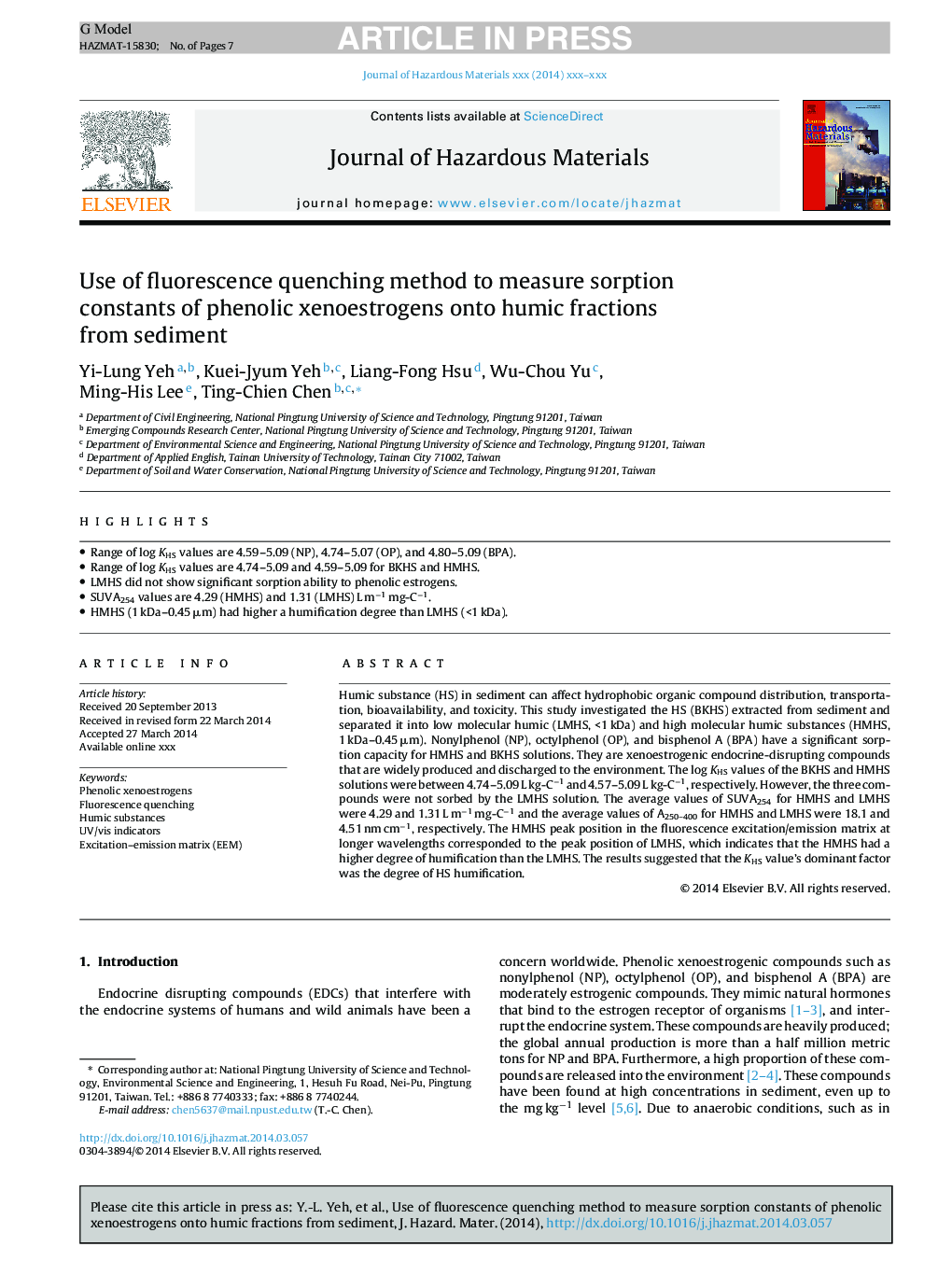| Article ID | Journal | Published Year | Pages | File Type |
|---|---|---|---|---|
| 576651 | Journal of Hazardous Materials | 2014 | 7 Pages |
Abstract
Humic substance (HS) in sediment can affect hydrophobic organic compound distribution, transportation, bioavailability, and toxicity. This study investigated the HS (BKHS) extracted from sediment and separated it into low molecular humic (LMHS, <1 kDa) and high molecular humic substances (HMHS, 1 kDa-0.45 μm). Nonylphenol (NP), octylphenol (OP), and bisphenol A (BPA) have a significant sorption capacity for HMHS and BKHS solutions. They are xenoestrogenic endocrine-disrupting compounds that are widely produced and discharged to the environment. The log KHS values of the BKHS and HMHS solutions were between 4.74-5.09 L kg-Câ1 and 4.57-5.09 L kg-Câ1, respectively. However, the three compounds were not sorbed by the LMHS solution. The average values of SUVA254 for HMHS and LMHS were 4.29 and 1.31 L mâ1 mg-Câ1 and the average values of A250-400 for HMHS and LMHS were 18.1 and 4.51 nm cmâ1, respectively. The HMHS peak position in the fluorescence excitation/emission matrix at longer wavelengths corresponded to the peak position of LMHS, which indicates that the HMHS had a higher degree of humification than the LMHS. The results suggested that the KHS value's dominant factor was the degree of HS humification.
Keywords
Related Topics
Physical Sciences and Engineering
Chemical Engineering
Chemical Health and Safety
Authors
Yi-Lung Yeh, Kuei-Jyum Yeh, Liang-Fong Hsu, Wu-Chou Yu, Ming-His Lee, Ting-Chien Chen,
